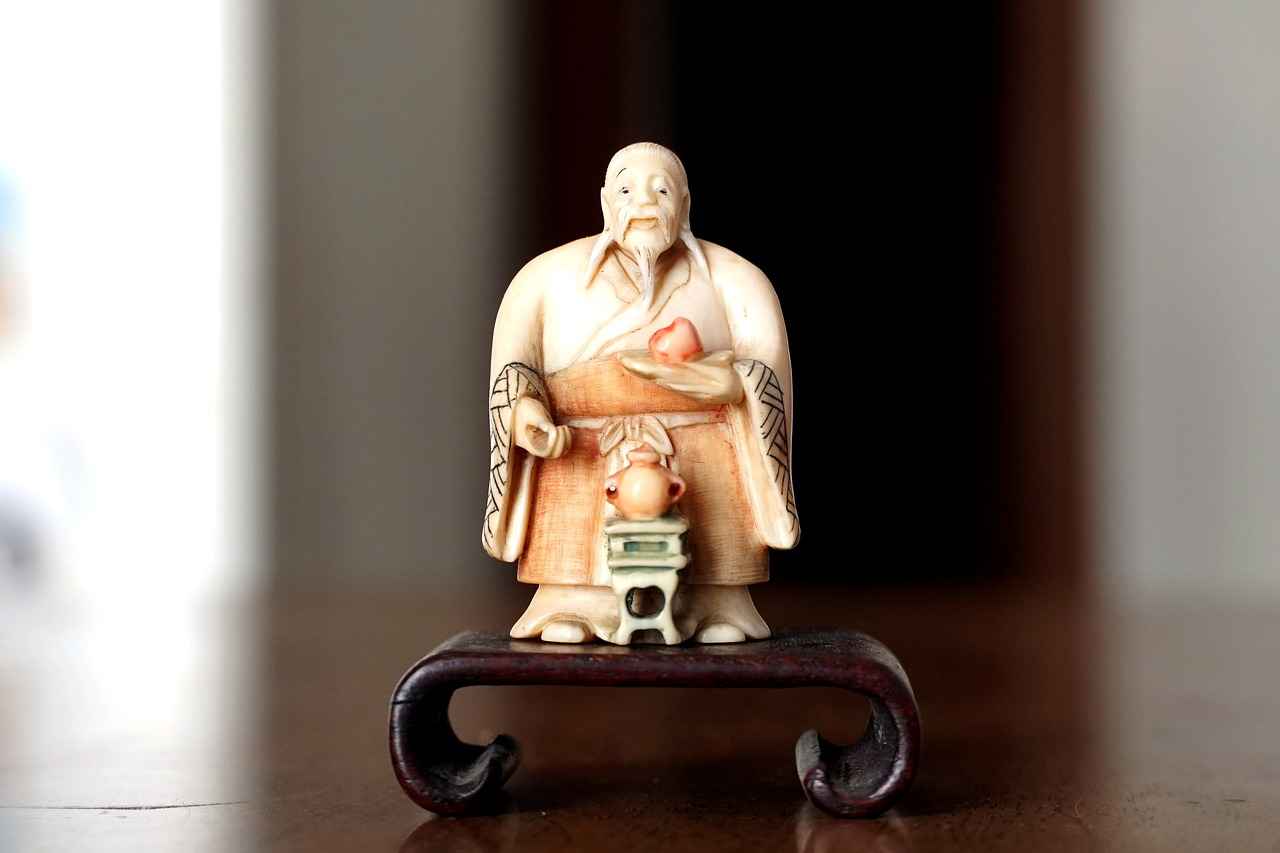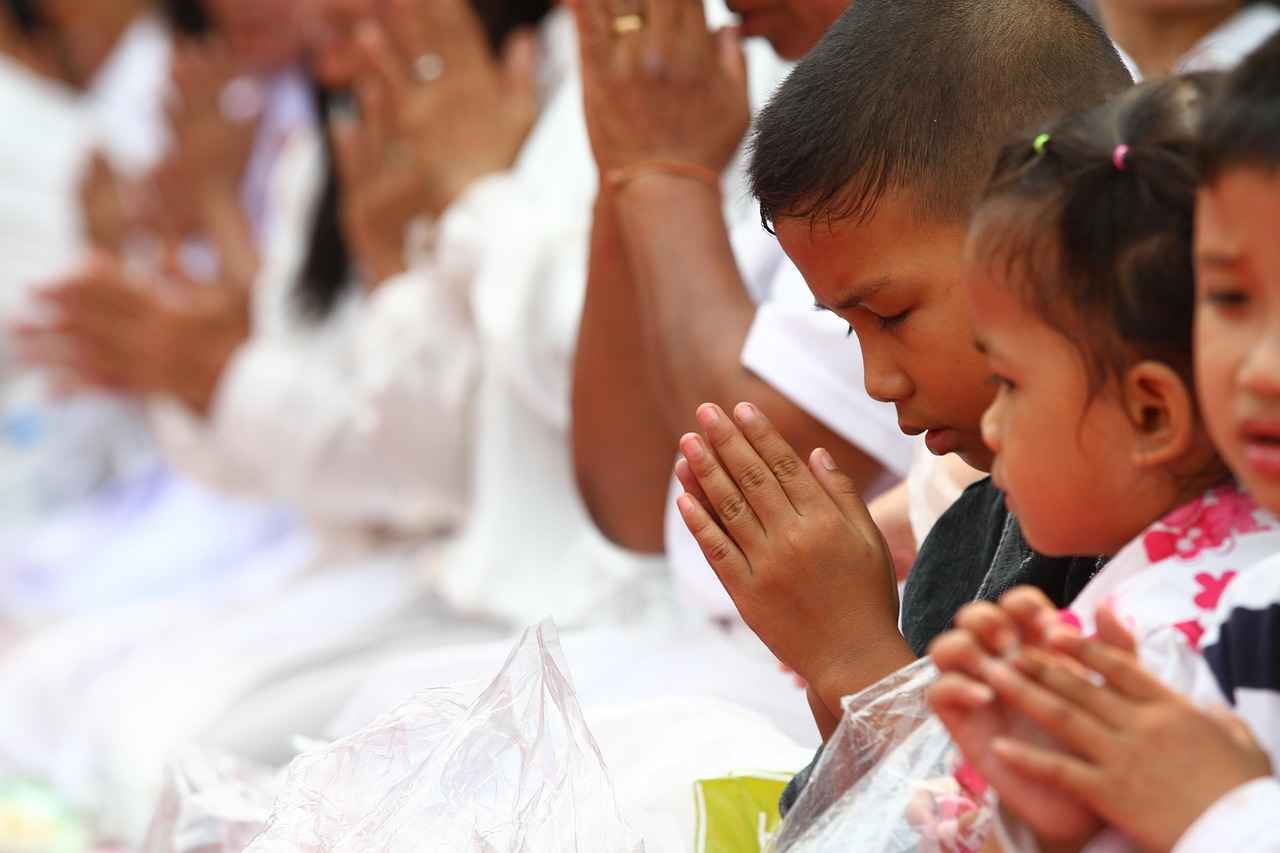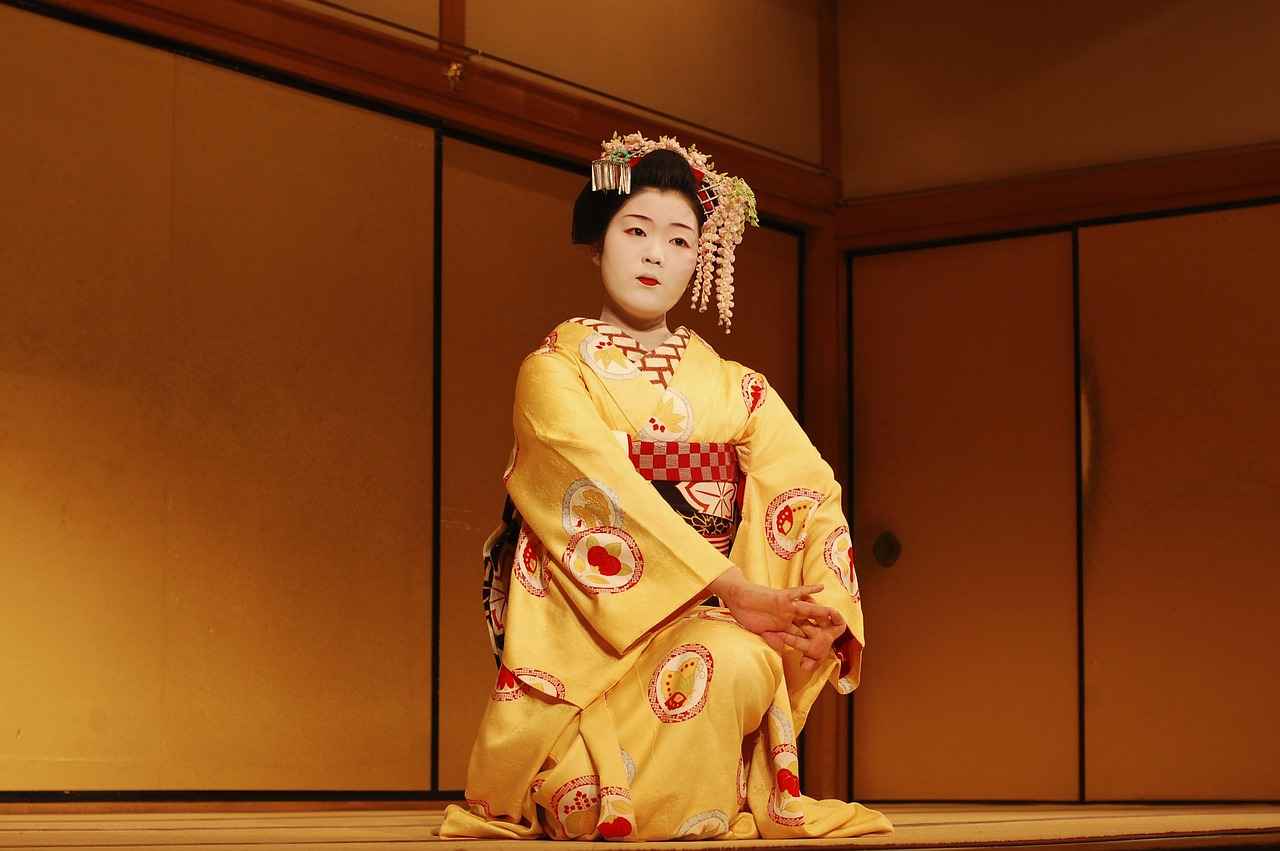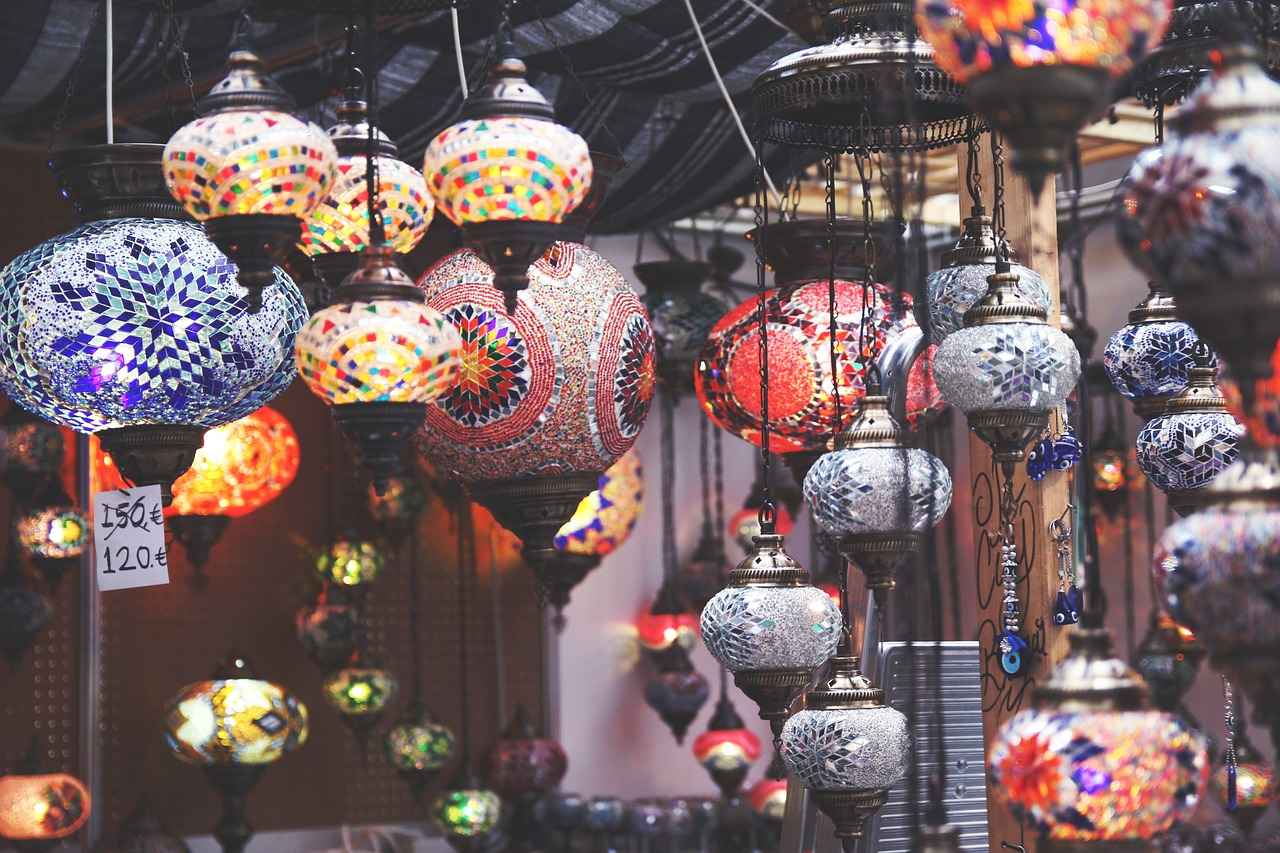This article delves into the rich history, styles, and cultural significance of men’s kimono, offering insights into its various forms, fabrics, and proper wearing techniques.
History of the Kimono
The kimono has a long and storied history in Japan, evolving from ancient clothing styles to become a symbol of Japanese culture and identity. Originally worn by both men and women, the kimono has transformed over centuries, reflecting societal changes and artistic trends.
Different Types of Men’s Kimono
Men’s kimono come in various styles, each suited for different occasions, from casual wear to formal ceremonies. These styles reflect the wearer’s status and the significance of the event.
- Formal Kimono Styles
- Montsuki: A black kimono adorned with family crests, traditionally worn during formal occasions.
- Shiro-muku: A white kimono worn by grooms during weddings, symbolizing purity.
- Casual Kimono Styles
- Yukata: A lightweight and comfortable kimono, perfect for summer festivals.
Fabrics Used in Kimono
The choice of fabric significantly impacts the kimono’s appearance and function. Common materials include:
- Silk: Luxurious and intricate, typically worn during formal events.
- Cotton: More affordable and breathable, ideal for casual wear.
How to Wear a Kimono
Wearing a kimono requires specific techniques to ensure a proper fit and elegant appearance. Key aspects include:
- Kimono Dressing Techniques: Learning to fold and layer the kimono effectively is crucial.
- Accessorizing: Accessories like obi and obijime enhance the overall aesthetic.
Occasions for Wearing a Kimono
Understanding when to wear a kimono is essential for respecting Japanese culture. Common occasions include:
- Ceremonial Events: Weddings, graduations, and festivals.
- Everyday Wear: Modern adaptations allow for casual use while retaining traditional elements.
The Cultural Significance of Kimono
The kimono represents more than just clothing; it embodies Japanese aesthetics, values, and a deep connection to history. Each design element carries meaning, reflecting the wearer’s personality and cultural heritage.
Conclusion: Embracing the Kimono Tradition
The kimono remains a vital aspect of Japanese culture, offering a beautiful way to connect with history, art, and identity while adapting to contemporary life.

History of the Kimono
The kimono, a quintessential element of Japanese culture, has a fascinating and rich history that dates back to ancient times. Initially, the term “kimono” simply referred to “a thing to wear,” encompassing various garments. Over the centuries, it has evolved into a distinctive style that reflects not only fashion but also the cultural identity of Japan.
Originating during the Heian period (794-1185), the kimono was influenced by Chinese clothing styles, incorporating vibrant colors and intricate patterns. As time progressed, the kimono became more tailored, with the introduction of the yukata and montsuki styles, each serving specific purposes and occasions.
During the Edo period (1603-1868), the kimono reached new heights of popularity and complexity. The rise of the merchant class led to the democratization of kimono fashion, allowing more people to express their individuality through colors and designs. This era also saw the emergence of regional styles, as different areas of Japan developed unique fabrics and motifs, further enriching the kimono’s legacy.
In modern times, while Western clothing has become prevalent, the kimono remains a powerful symbol of Japan’s cultural heritage. It is worn during significant events such as weddings, festivals, and tea ceremonies, serving as a reminder of the traditions that shape Japanese society. The kimono’s design elements, from colors to patterns, often carry deep meanings, reflecting the wearer’s personality and the season.
Today, the kimono continues to adapt, blending traditional craftsmanship with contemporary fashion trends. This evolution ensures that the kimono remains relevant in modern society, allowing new generations to connect with their cultural roots while embracing change.
In conclusion, the kimono’s long and storied history is a testament to its significance in Japanese culture. As it evolves, it retains its essence, embodying the beauty and richness of Japanese identity.

Different Types of Men’s Kimono
Men’s kimono are an essential part of Japanese culture, showcasing a variety of styles that cater to different occasions. Each type is designed to reflect the wearer’s status and the significance of the event, making it crucial to choose the appropriate style.
Men’s kimonos can be classified into several categories, each serving specific purposes. Below are some of the most notable styles:
- Formal Kimono Styles
- Montsuki: This black kimono is often adorned with family crests and is typically worn during formal events like weddings and ceremonies. The montsuki symbolizes honor and lineage, making it a staple for significant occasions.
- Shiro-muku: A white kimono worn by grooms during weddings, representing purity and new beginnings. It is a traditional choice that highlights the importance of the marital ceremony.
- Casual Kimono Styles
- Yukata: A lightweight and breathable kimono made from cotton, perfect for summer festivals and casual outings. Its vibrant colors and patterns make it a favorite during warm weather.
- Hifu: A casual kimono often worn in colder months, typically layered over other clothing. It provides warmth while still allowing for stylish expression.
- Special Occasion Kimonos
- Hakama: A traditional pleated skirt worn over a kimono, often used during graduation ceremonies or martial arts events. It signifies achievement and respect.
- Obi: While not a kimono itself, the obi is an essential accessory that complements the kimono, available in various styles and widths to suit different occasions.
Understanding the different types of men’s kimono allows for better appreciation of their cultural significance, helping wearers choose the right style for every occasion.
Formal Kimono Styles
are a significant aspect of traditional Japanese attire, especially during important events such as weddings, ceremonies, and formal gatherings. Among these, the montsuki stands out as a quintessential representation of formality and respect.
The montsuki is a black kimono adorned with family crests, symbolizing honor, lineage, and the wearer’s social status. Traditionally, men wear this kimono during significant occasions, showcasing intricate designs that reflect the importance of the event. The use of family crests, or mon, is particularly noteworthy as it connects the wearer to their ancestry and heritage.
Another formal style is the shiro-muku, a pristine white kimono often worn by grooms during weddings. This kimono represents purity and new beginnings, making it a perfect choice for the start of a marital journey. Its simplicity is striking, emphasizing the significance of the ceremony rather than the attire itself.
In addition to these, there are other formal styles worth mentioning, such as the hifu, a traditional jacket worn over the kimono for added warmth and elegance, particularly during colder seasons or formal gatherings.
| Kimono Style | Occasion | Symbolism |
|---|---|---|
| Montsuki | Weddings, Ceremonies | Honor, Lineage |
| Shiro-muku | Weddings | Purity, New Beginnings |
| Hifu | Formal Gatherings | Elegance, Warmth |
Understanding the various is essential for anyone interested in Japanese culture. Each style not only serves a practical purpose but also carries deep cultural significance, allowing wearers to express their respect for tradition while participating in meaningful life events.
In conclusion, formal kimonos like the montsuki and shiro-muku are more than just clothing; they are a celebration of Japanese culture and heritage, embodying the values of respect, family, and tradition.
Montsuki
is a traditional Japanese kimono, characterized by its deep black color and the presence of family crests, known as mon. This formal attire is predominantly worn by men during significant occasions, such as weddings, funerals, and other ceremonial events. The montsuki serves not only as a garment but also as a profound symbol of honor and lineage, reflecting the wearer’s familial heritage.
The design of the montsuki is typically simple yet elegant, allowing the family crests to take center stage. These crests are meticulously embroidered onto the fabric and can vary greatly between families, often representing their unique history and status. The black color of the montsuki is particularly significant, as it conveys a sense of formality and respect, making it a staple in traditional Japanese attire.
In terms of fabric, montsuki is commonly made from high-quality silk, contributing to its luxurious feel and appearance. The choice of fabric plays a crucial role in the overall aesthetic, with silk providing a soft, flowing drape that enhances the garment’s elegance. When worn, the montsuki is typically paired with a hakama, which is a pleated skirt-like garment, further emphasizing the formal nature of the outfit.
To wear a montsuki properly, one must adhere to specific dressing techniques. The kimono is wrapped around the body in a particular manner, and the obi (a wide belt) is tied securely to ensure a polished look. Accessorizing with traditional items, such as a haneri (a decorative collar) and obijime (a cord to secure the obi), can enhance the overall presentation.
In conclusion, the montsuki is not just a garment; it is a representation of Japanese culture, embodying the values of family, respect, and tradition. Wearing a montsuki allows individuals to connect with their heritage while participating in significant cultural events.
Shiro-muku
The is a traditional Japanese kimono that holds a significant place in wedding ceremonies. This elegant white garment is typically worn by grooms during their nuptials, symbolizing purity and new beginnings in marital life. The color white in Japanese culture is often associated with cleanliness and freshness, making it a fitting choice for such a momentous occasion.
In addition to its aesthetic appeal, the shiro-muku carries deep cultural and historical significance. Traditionally, it represents the groom’s commitment to his bride and their shared journey into a new life together. The simplicity of the white fabric allows for a focus on the couple’s love and the sacredness of their vows.
Wearing a shiro-muku involves specific dressing techniques, which are essential for achieving the desired traditional look. The kimono is typically layered with an obi (a wide belt) that is tied at the back, ensuring that the garment fits snugly and elegantly. The choice of fabric is also important; high-quality silk is often preferred for its luxurious feel and ability to drape beautifully.
During the wedding ceremony, the groom may also wear additional accessories, such as a haori (a traditional jacket) and various ornamental pieces that enhance the overall appearance of the shiro-muku. These elements not only add to the visual appeal but also serve to signify the importance of the occasion.
In summary, the shiro-muku is more than just a garment; it embodies the cultural values of Japan, representing the purity and commitment that come with marriage. As traditions evolve, the shiro-muku continues to be a cherished attire for grooms, ensuring that the essence of this timeless symbol remains alive in modern wedding ceremonies.
Casual Kimono Styles
Casual kimonos are a delightful aspect of Japanese fashion, particularly during the warm summer months. Among these, the yukata stands out as a popular choice, known for its lightweight fabric and comfortable fit. These garments are not only a staple at summer festivals but also serve as an excellent option for leisurely outings, allowing wearers to enjoy both style and comfort.
The yukata is typically made from cotton, making it breathable and suitable for hot weather. Its vibrant colors and playful patterns often reflect seasonal themes, enhancing the festive atmosphere. Many people don these casual kimonos during events like hanabi (fireworks) festivals, where the combination of traditional attire and modern celebrations creates a unique cultural experience.
Wearing a yukata is not just about fashion; it also involves a cultural significance. Traditionally, the yukata was worn after a bath, serving as a comfortable garment for lounging. Today, it has transformed into a fashionable choice for outdoor events, embodying the spirit of summer in Japan.
When it comes to styling a yukata, accessorizing plays an essential role. A haneri (collar) and obi (belt) can elevate the overall look, allowing for personal expression while adhering to traditional aesthetics. Additionally, pairing a yukata with geta (traditional wooden sandals) completes the outfit and adds to its authenticity.
In conclusion, casual kimonos like the yukata are more than just clothing; they are a celebration of Japanese culture and summer festivities. Their lightweight nature and versatile styles make them a perfect choice for anyone looking to embrace the essence of Japanese tradition while enjoying the comfort of modern fashion.

Fabrics Used in Kimono
The choice of fabric is pivotal in determining not only the appearance but also the functionality of a kimono. Various fabrics lend themselves to different styles and purposes, each with its own unique characteristics.
Among the most popular fabrics used in kimono making are:
- Silk: Renowned for its luxurious texture and sheen, silk is often associated with formal kimonos. The intricate patterns and vibrant colors achievable with silk make it a favored choice for special occasions such as weddings and ceremonies. The soft drape of silk enhances the overall elegance of the garment.
- Cotton: More affordable and breathable, cotton is commonly used for casual wear, particularly in summer. The yukata, a lightweight cotton kimono, is perfect for festivals and leisure activities. Cotton kimonos are easy to care for and provide comfort in hot weather, making them a practical option.
- Ramie: This lesser-known fabric offers a unique texture and is often blended with cotton or silk. Ramie kimonos are known for their durability and resistance to wrinkles, making them suitable for everyday wear.
- Linen: Similar to cotton, linen kimonos are breathable and ideal for warm climates. They possess a casual charm and are often worn during informal gatherings or summer events.
Each fabric type not only influences the visual appeal of the kimono but also its practicality and comfort level. Choosing the right fabric is essential for ensuring that the kimono serves its intended purpose while also reflecting the wearer’s style and personality.
In conclusion, understanding the various fabrics used in kimono construction enhances appreciation for this traditional garment. Whether opting for the luxurious feel of silk or the casual comfort of cotton, the fabric choice plays a crucial role in the overall experience of wearing a kimono.
Silk Kimonos
have long been celebrated for their luxurious texture and exquisite craftsmanship. These elegant garments are often worn during formal events and celebrations, embodying the rich cultural heritage of Japan. The use of silk not only enhances the visual appeal but also adds a level of comfort that is unmatched by other fabrics.
The intricate designs found on silk kimonos often reflect seasonal themes, nature, and traditional motifs. Each pattern tells a story, showcasing the artistry and skill of the craftsmen who create them. For instance, floral designs are popular during spring, while motifs of falling leaves might be favored in autumn. This attention to detail makes each kimono a unique piece of wearable art.
In addition to their aesthetic qualities, silk kimonos hold significant cultural importance. They are often worn during important life events such as weddings, tea ceremonies, and festivals. When donned, these kimonos not only signify the occasion but also the wearer’s respect for tradition. For example, a groom may wear a shiro-muku, a white silk kimono, symbolizing purity and new beginnings.
Moreover, the versatility of silk kimonos allows them to be styled in various ways, making them suitable for different occasions. While traditionally worn in formal settings, modern adaptations have made them popular in casual settings as well, blending traditional aesthetics with contemporary fashion.
In conclusion, silk kimonos are more than just clothing; they are a representation of Japanese culture, history, and artistry. Their luxurious feel and intricate designs ensure that they remain a cherished garment, bridging the past with the present.
Cotton Kimonos
, particularly the yukata, have become increasingly popular for their affordability and comfort, making them a staple for casual wear, especially during the hot summer months. These traditional garments are crafted from lightweight cotton fabric, allowing for excellent breathability, which is essential in warm weather.
The yukata is not only a practical choice but also a stylish one. Available in a variety of colors and patterns, these kimonos can be easily dressed up or down depending on the occasion. Whether you are attending a summer festival, enjoying a day at the beach, or simply lounging at home, the yukata offers versatility that few other garments can match.
Another significant advantage of cotton kimonos is their affordability. Unlike silk kimonos, which can be quite expensive due to the intricate craftsmanship and luxurious materials, cotton options are budget-friendly, making them accessible to a wider audience. This affordability encourages more people to embrace traditional Japanese attire, fostering a deeper appreciation for cultural heritage.
Moreover, the ease of care associated with cotton kimonos adds to their appeal. They are machine washable, requiring minimal maintenance compared to their silk counterparts. This practicality makes them an ideal choice for everyday wear, allowing individuals to enjoy the elegance of a kimono without the associated upkeep.
In conclusion, cotton kimonos like the yukata represent a perfect blend of tradition and modern practicality. Their affordability, breathability, and ease of care make them a fantastic option for anyone looking to incorporate a touch of Japanese culture into their wardrobe. As more people discover the benefits of these garments, cotton kimonos will likely continue to gain popularity, bridging the gap between past and present.

How to Wear a Kimono
Wearing a kimono is an art that requires attention to detail and a deep understanding of traditional techniques. This beautiful garment, steeped in history, can be both elegant and comfortable when worn correctly. Here, we will explore the essential techniques to ensure that your kimono fits properly and looks stunning, with a specific focus on the correct way to tie the obi belt.
The first step in wearing a kimono is to choose the right size. Kimonos are designed to be worn loosely, allowing for movement and comfort. It is important to select a kimono that fits well in the shoulders and sleeves, as this will affect the overall appearance.
Once you have your kimono on, the next step involves layering. Traditionally, kimonos are worn over a juban (a nagajuban or undergarment). This not only protects the kimono but also adds an extra layer of elegance. Make sure the juban is visible at the collar, as this is a key aspect of the kimono’s aesthetic.
Next, we come to the obi belt. Tying the obi correctly is crucial for achieving that polished look. The obi should be wrapped around the waist, with the ends crossing at the back. A common technique is the taiko obi style, which creates a beautiful, flat bow at the back. To tie it:
- Wrap the obi around your waist and secure it tightly.
- Bring the ends to the back and cross them.
- Fold the top part of the obi to create a flat bow.
- Tuck the ends securely and adjust the bow for symmetry.
Finally, accessorizing your kimono can enhance its beauty. Consider adding an obijime (a decorative cord) or a haneri (collar) to personalize your outfit while adhering to traditional styles.
In conclusion, wearing a kimono is a beautiful way to connect with Japanese culture. By mastering the techniques of fitting, layering, and tying the obi correctly, you can ensure that you not only look elegant but also feel confident in this timeless attire.
Kimono Dressing Techniques
are essential for anyone looking to achieve the authentic and traditional appearance when wearing this iconic Japanese attire. Mastering these techniques not only enhances the aesthetic appeal but also shows respect for the cultural significance of the kimono.
The first step in dressing properly is understanding the layers of the kimono. A typical kimono ensemble consists of several layers, including the kimono itself, an obi (sash), and various undergarments. Each layer serves a purpose, contributing to the overall look and comfort.
- Folding the Kimono: Start by laying the kimono flat. Ensure that the left side overlaps the right side, which is crucial as it symbolizes that the wearer is alive. The right side over left is reserved for funerals.
- Layering: After folding, put on the nagajuban (undergarment) first. This layer protects the kimono from sweat and dirt, allowing for a cleaner appearance.
- Obi Tying: The obi is a significant part of the kimono. There are various styles of tying the obi, such as the taiko (drum) knot for formal occasions. Ensure the obi is tied snugly but not too tight to maintain comfort.
It is also important to pay attention to the accessories that complement the kimono. Items like obijime (cords), haneri (collar), and obiage (obi scarf) add flair and individuality to the outfit while adhering to traditional standards.
In conclusion, mastering is vital for anyone wishing to don this beautiful garment. By understanding the significance of each layer and accessory, one can appreciate the artistry and tradition behind the kimono, ensuring that it is worn with the respect it deserves.
Accessorizing Your Kimono
The art of accessorizing a kimono is a crucial aspect of traditional Japanese attire, enhancing its overall aesthetic while allowing for personal expression. Accessories such as obi, obijime, and haneri play significant roles in achieving a polished and stylish look.
Obi, the wide belt worn around the waist, is perhaps the most prominent accessory. It comes in various styles, widths, and colors, allowing wearers to choose one that complements their kimono. A well-chosen obi can elevate the outfit, transforming a simple kimono into a statement piece. For formal occasions, a fukuro obi is often preferred, featuring intricate designs and patterns that signify elegance and sophistication.
In addition to the obi, the obijime is a decorative cord that ties around the obi, adding an extra layer of detail. This accessory can be made from various materials, including silk and cotton, and is available in a multitude of colors. The obijime not only serves a functional purpose by securing the obi but also enhances the visual appeal of the ensemble. Choosing an obijime that contrasts or complements the obi can create a harmonious look.
Another essential accessory is the haneri, a collar that adds a pop of color and texture to the kimono. Often made from a different fabric than the kimono itself, the haneri can be embroidered or patterned, serving as a canvas for personal expression. This accessory allows wearers to showcase their style while adhering to traditional norms.
Overall, the thoughtful selection of accessories like obi, obijime, and haneri not only enhances the kimono’s beauty but also provides a unique opportunity for wearers to express their individuality within the framework of traditional Japanese attire.

Occasions for Wearing a Kimono
Understanding when to wear a kimono is essential for honoring the rich tapestry of Japanese culture. Each style of kimono is intricately tied to specific events and ceremonies, reflecting both tradition and the significance of the occasion.
The kimono, a timeless garment, is not just clothing; it is a symbol of identity and respect. Wearing a kimono appropriately demonstrates an understanding of its cultural context. Below are some key occasions when donning a kimono is particularly significant:
| Occasion | Kimono Style | Significance |
|---|---|---|
| Weddings | Shiro-muku | This white kimono represents purity and new beginnings. |
| Funerals | Montsuki | A formal black kimono symbolizes mourning and respect for the deceased. |
| Graduations | Furisode | Worn by young women, this kimono signifies youth and celebration. |
| Seasonal Festivals | Yukata | This casual summer kimono is perfect for festivals, embodying a festive spirit. |
In addition to these ceremonial occasions, everyday wear has also adapted to modern tastes. Casual styles of kimono, such as the yukata, are now worn during leisure activities, showcasing a blend of tradition and contemporary lifestyle.
Moreover, understanding the cultural significance of each kimono style enhances the experience of wearing one. For instance, the patterns and colors chosen often reflect seasonal changes or personal milestones, making each garment unique.
In conclusion, wearing a kimono is a beautiful way to connect with Japanese heritage. By choosing the appropriate style for each occasion, individuals not only respect tradition but also celebrate the rich cultural history that the kimono represents.
Ceremonial Occasions
hold a special place in Japanese culture, and the kimono is often the attire of choice during these significant events. The kimono is not merely clothing; it is a representation of heritage, tradition, and the values of Japanese society. Wearing a kimono during important ceremonies underscores the respect and significance of the occasion.
During weddings, for instance, the choice of kimono can vary based on the couple’s preferences and family traditions. The groom typically wears a shiro-muku, a white kimono symbolizing purity and new beginnings, while the bride may opt for a colorful uchikake, showcasing intricate designs that reflect her family’s history. These choices are steeped in symbolism, emphasizing the importance of family and lineage.
Graduations also see a significant number of individuals donning kimonos. Young women often wear a furisode, characterized by its long sleeves, which signifies their transition into adulthood. This occasion is marked by celebration and pride, making the kimono a fitting choice to honor this milestone.
Additionally, various festivals throughout the year provide an opportunity for people to wear casual kimonos, such as the yukata. This lightweight garment is perfect for summer festivals, allowing wearers to enjoy the festivities while honoring traditional attire. The vibrant colors and patterns of yukata often reflect seasonal themes, enhancing the celebratory atmosphere.
In conclusion, the kimono plays an essential role in , symbolizing not only the beauty of Japanese culture but also the deep-rooted values associated with significant life events. Wearing a kimono during these moments is a way of paying homage to the past while celebrating the present.
Everyday Wear
In modern Japan, the kimono has transcended its traditional boundaries, evolving into a versatile garment suitable for everyday wear. While it retains its historical significance and aesthetic appeal, contemporary adaptations have made it accessible for casual settings. This shift reflects a broader trend of integrating traditional attire into daily life, allowing individuals to express their cultural identity in a relaxed manner.
Casual kimonos, such as the yukata, are particularly popular during the summer months. Made from lightweight cotton, yukatas are comfortable and breathable, making them ideal for warm weather. They often feature vibrant colors and playful patterns, appealing to a younger audience looking to embrace their heritage without the formality associated with traditional kimonos.
Another aspect of everyday kimono wear is the hifu, a casual kimono-like jacket. The hifu is typically worn over a simple outfit, providing a stylish layer that combines tradition with modern fashion. This garment is often paired with jeans or casual trousers, showcasing the versatility of kimono-inspired clothing.
Additionally, many designers are now creating kimono-inspired clothing lines that incorporate traditional elements into contemporary styles. These pieces, while not strictly kimonos, often feature similar fabrics, patterns, and cuts, allowing wearers to enjoy the elegance of kimono aesthetics in a more casual context.
Wearing a kimono casually also encourages a more personal expression of style. Accessories such as obi (belts), obijime (decorative cords), and even modern footwear can be mixed and matched, allowing individuals to showcase their creativity while respecting traditional elements.
Ultimately, the adaptation of kimonos for everyday wear highlights a cultural shift that embraces both heritage and modernity. As more people choose to wear kimonos in their daily lives, this beautiful garment continues to evolve, bridging the gap between past and present.

The Cultural Significance of Kimono
The kimono is not merely a piece of clothing; it is a profound representation of Japanese culture and identity. This traditional garment encapsulates the essence of Japanese aesthetics, reflecting values that have been cherished for centuries. The intricate designs, vibrant colors, and specific patterns of the kimono tell stories of history and tradition, making it a living artifact of Japan’s rich past.
In Japanese society, the kimono serves as a symbol of respect and honor. Each kimono is crafted with care, often incorporating elements that signify the wearer’s social status, age, and the occasion for which it is worn. For instance, the montsuki, a formal black kimono adorned with family crests, is typically donned during significant ceremonies, highlighting the importance of lineage and family heritage.
Moreover, the choice of fabric plays a crucial role in the cultural significance of the kimono. Silk kimonos are often associated with luxury and are worn during formal events, while cotton kimonos, like the yukata, are popular for casual summer festivals. This versatility showcases the kimono’s adaptability, allowing it to fit into various aspects of daily life while still maintaining its traditional roots.
Each design element within a kimono carries deep meaning. Colors are chosen based on the season or the occasion, and patterns can symbolize everything from nature to personal aspirations. This intricate symbolism adds layers of meaning to the garment, allowing wearers to express their individuality while honoring cultural norms.
In contemporary Japan, the kimono continues to thrive, merging traditional craftsmanship with modern fashion trends. As society evolves, so does the kimono, ensuring its relevance and appreciation in today’s world. It remains a vital aspect of Japanese culture, not just as clothing, but as a vibrant connection to history, art, and identity.
In conclusion, the kimono is a rich tapestry of Japanese heritage, embodying values that resonate deeply within the culture. It is a garment that tells stories, honors traditions, and connects generations, making it a cherished symbol of Japan.
Symbolism in Kimono Design
The symbolism embedded in kimono design is a fascinating aspect that reflects Japan’s rich cultural heritage. Each design element—from colors to patterns—carries significant meaning, offering insights into the wearer’s personality, the seasons, and traditional beliefs.
For instance, the choice of color in a kimono can signify various emotions and states. Red, often associated with happiness and good fortune, is frequently used in celebratory occasions, while blue may represent calmness and tranquility. Additionally, the season plays a crucial role in the choice of patterns, with floral designs like cherry blossoms being popular in spring, symbolizing renewal and the fleeting nature of life.
| Color | Symbolism |
|---|---|
| Red | Happiness, Good Fortune |
| Blue | Calmness, Tranquility |
| Black | Elegance, Formality |
| White | Purity, Simplicity |
Furthermore, patterns also hold deep meanings. For example, the crane is a common motif that symbolizes longevity and good fortune, while the pine tree represents resilience and endurance. These motifs are not merely decorative; they tell stories and convey wishes for the wearer’s future.
In addition to personal expression, the symbolism in kimono design also connects to the cultural heritage of Japan. Many designs are influenced by historical events, folklore, and nature, making each kimono a unique tapestry of the wearer’s identity and values.
In conclusion, understanding the symbolism in kimono design enriches the experience of wearing this traditional attire. It transforms a simple garment into a profound statement of cultural significance, allowing individuals to express their personal stories while honoring their heritage.
Kimono in Modern Society
In today’s fast-paced world, the kimono remains a significant element of Japanese culture, showcasing a remarkable ability to adapt while preserving its rich heritage. As fashion evolves, the kimono has seamlessly integrated into the contemporary wardrobe, appealing to both traditionalists and modern fashion enthusiasts alike.
The fusion of traditional craftsmanship with modern design principles has led to a resurgence of interest in kimono attire. Designers are experimenting with fabrics, colors, and patterns, creating pieces that resonate with younger generations. This evolution ensures that the kimono not only remains relevant but also becomes a canvas for personal expression.
Moreover, the kimono is no longer confined to formal occasions. It has found its way into casual settings, with styles like the yukata becoming popular for summer festivals and everyday wear. This shift signifies a broader cultural acceptance of traditional attire in daily life, highlighting a growing appreciation for Japan’s cultural roots.
Social media platforms also play a pivotal role in this transformation. Influencers and fashion bloggers showcase their unique takes on kimono styling, encouraging a wider audience to embrace this traditional garment. Online tutorials and fashion guides help demystify the process of wearing a kimono, making it accessible to those unfamiliar with its intricacies.
Furthermore, the kimono serves as a powerful symbol of cultural identity. It embodies the values of respect, artistry, and history that are deeply embedded in Japanese society. As such, wearing a kimono today is not merely about fashion; it is an act of honoring one’s heritage and embracing the beauty of tradition in a modern context.
In conclusion, the kimono’s journey through modern society reflects a dynamic interplay between tradition and innovation. By blending age-old techniques with contemporary aesthetics, the kimono continues to thrive, ensuring that this iconic garment remains a vital part of Japan’s cultural landscape.

Conclusion: Embracing the Kimono Tradition
The kimono is not just a garment; it is a profound representation of Japanese culture, weaving together threads of history, artistry, and identity. This traditional attire has transcended its origins to become a symbol of elegance and cultural pride, adapting seamlessly to the rhythms of contemporary life.
Historically, the kimono has roots that date back to the Heian period, where it evolved from simple clothing into a complex fashion statement reflecting social status and personal expression. Each kimono tells a story through its design, colors, and patterns, often influenced by the seasons and regional traditions. For instance, the vibrant hues of a summer kimono contrast sharply with the muted tones of winter wear.
Today, the kimono is embraced in various forms, from formal styles like the montsuki worn during significant ceremonies to casual versions such as the yukata, popular during summer festivals. This adaptability highlights the kimono’s role as a living piece of culture, allowing wearers to connect with their heritage while navigating modern life.
Moreover, the kimono’s significance extends beyond aesthetics. It embodies values such as respect and honor, often worn during important life events like weddings and graduations. The intricate designs and craftsmanship involved in creating a kimono reflect the dedication to preserving traditional Japanese arts.
As society evolves, so does the kimono. Contemporary designers are reimagining this classic attire, incorporating modern fabrics and styles while respecting its historical roots. This fusion of old and new ensures that the kimono remains relevant, allowing future generations to appreciate its beauty and significance.
In conclusion, the kimono is a vital aspect of Japanese culture, offering a beautiful way to connect with history, art, and identity while adapting to contemporary life. Its enduring legacy serves as a reminder of the importance of cultural heritage in an ever-changing world.
Frequently Asked Questions
- What is a kimono?
A kimono is a traditional Japanese garment characterized by its long sleeves and wrap-around design. It has deep cultural significance and is often worn during special occasions and ceremonies.
- How do I choose the right type of kimono?
Choosing the right kimono depends on the occasion. For formal events, opt for styles like montsuki or shiro-muku, while casual outings call for a yukata. Consider the fabric and color to reflect the event’s mood.
- Can I wear a kimono casually?
Absolutely! Modern kimonos can be worn casually, especially during summer festivals or relaxed gatherings. Just pick a lightweight fabric like cotton for comfort.
- What fabrics are commonly used for kimonos?
Kimonos are made from various fabrics, with silk being the most luxurious choice for formal occasions. Cotton is popular for casual wear due to its breathability and ease of care.
- How do I properly wear a kimono?
Wearing a kimono involves specific techniques, including how to fold it correctly and tie the obi belt. It’s essential to learn these methods to achieve an elegant and authentic look.
- What accessories can I wear with a kimono?
Accessorizing your kimono can enhance its beauty. Common accessories include the obi (belt), obijime (cord), and haneri (collar), allowing for personal expression while staying true to tradition.












